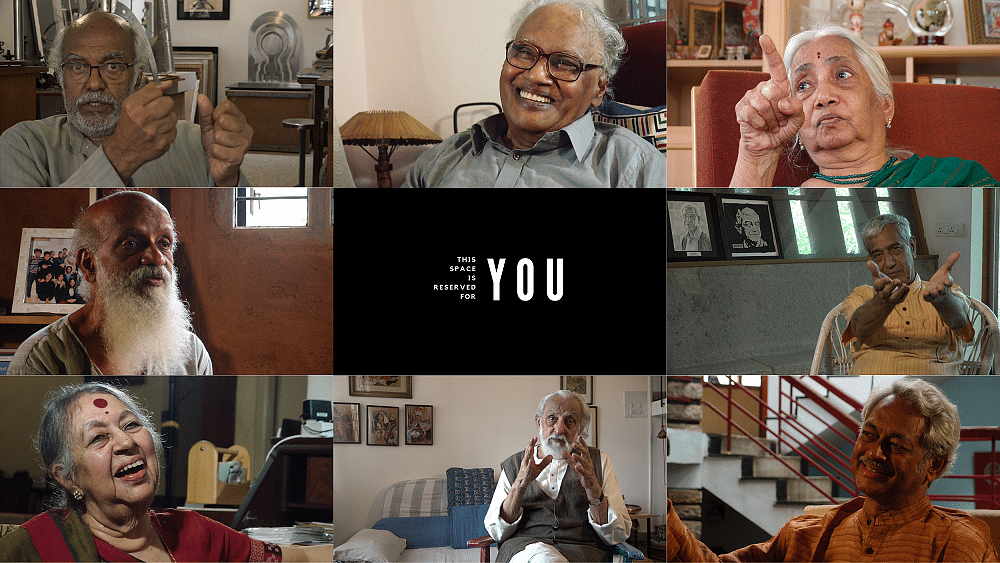
Ranjan Kamath wears many hats but he is essentially a storyteller and the stories are told through films, performances, poems, oral storytelling, videos and audios.
“The many hats are actually various avatars of visual storytelling. I enjoy migrating between mediums, it is a very enriching experience,” says Kamath, a graduate from the London Film School who has worked as cinematographer and director on documentaries and television series for BBC, PBS. Channel Four and National Geographic, among others.
His latest initiative, 'Mitra Tantra Archive', launched in 2018, is a personal effort at recording and archiving the personal narratives or oral histories of ordinary and extraordinary Indians to create an Encyclopedia of the Indian Experience, preserving for posterity their experiences and wisdom.
Mitra Tantra, as the name suggests, is inspired by the Panchatantra, propounding the ‘niti’ of life. It is a non-profit public broadcast initiative under the auspices of the C +ve Foundation.
Over the decades, having mutely witnessed the passing of hundreds, if not thousands of interesting personalities from all walks of life, Bengaluru-based Kamath rues the fact there is little or no visual or audio record of their experiences or wisdom preserved for posterity.
“Personally, I believe real ‘big data’ is the abundant wisdom and experiences of the citizens. Mitra Tantra is designed to curate that data, to be that Encyclopedia of the Indian Experience,” explains Kamath who grew up a pathological archivist, arranging newspaper clippings in dozens of scrap books.
Till date, Mitra Tantra has curated conversations ranging from a 91-year-old taxi driver who drove Raj Kapoor around when in Bangalore to Bharat Ratna Prof. CNR Rao. The list includes sculptors, film critics, authors, architects, care-givers, businessmen, entrepreneurs, economists, feminists et al.
Conversations are curated into clips ranging from 90 seconds to 3 minutes, which may be watched or listened to. The experience emulates reading a book, where you might read a para or a page or, a few chapters each time.
The archive has more than 1000 curated clips of conversation so far on the Mitra Tantra channel on YouTube, with 100 plus playlists on an ever-increasing range of issues from making coffee to first person experiences of Partition and Independence Day 1947.
Prominent personalities featured include M.S. Sathyu, Girish Kasaravalli, Prasanna, Capt. G. Gopinath, Balan Nambiar, Ravi Sondhi, Shashi Deshpande, Dr. C. Hariharan, M. Chandrashekhar, Krishnarao Jaisim, Sakuntala Narasimhan and others.
“What we’ve aggregated so far is infinitely more than just life stories and the resource could serve a multitude of purposes from casual listening, streaming into classrooms or facilitating research,” he informs, adding that they are aiming to make the archive the largest repository of India-centric social anthropology.
What makes Mitra Tantra unique is its design and scope as it is encyclopaedic, focusing on experiences rather than events in time and grows organically. Interestingly, while it is a compendium of first-person autobiographies, it is also evolving into biographical sketches of third persons by virtue of interactions with those in conversation. Such people include Jayaprakash Narayan, Kamaladevi Chattopadhyay, Kapila Vatsayayan, Shankar Nag, to name a few.
As a documentary filmmaker, Kamath has produced four feature documentaries with socio-political themes for Indian audiences but ironically the films were viewed more internationally. Fishers of Men was about Jesuit missionaries; Die is Caste was an appraisal of the Naxalite movement in Bihar. While Tanvir ka Safarnama tells the story of a theatre repertory company, Tam Bram is a biopic of jazz pianist Madhav Chari.
“I am very interested in the phenomenon of change which is a common thread featuring various agents of change,” he emphasises.
It was when Kamath assumed responsibilities of single parenthood that he took a sabbatical from film making to launch Natakvalas, a performance arts initiative. What started with two children in 2005 has grown to over a hundred children and adults who learn the merits and rigours of psycho-physical training – derived from martial arts – through the performance arts.
“The focus was not to groom only performers, but to apply performance training to anything you do from academics to sports and everything in between, including the workplace”.
Alongside, Kamath has done readings and performances at the British Council which included Kipling, Roald Dahl, Vikram Seth and others. He has also conducted annual Shakespeare workshops until 2016.
Another interesting one is the Audio Katha project that brings out audiobooks on classic literature to the present generation who have a tough time reading books. The project was kick-started with Rudyard Kipling’s ‘Just So Stories’. Other works to follow in similar format include the Panchatantra, Katha Sarit Sagara and the Ramayana.
“We have created cinema without pictures or an aural cinematic experience which means you close your eyes and see the pictures in your imagination with the book soundscaped in stereo.”
Given his boundless energy and enthusiasm, Kamath continues to innovate and toy with new ideas. ‘An Aurat Alone’, the first post-lockdown theatre performance was kicked off in early November at Rangashankara. It is a series of monologue one-act plays written by Italian playwrights Dario Fo and Franca Rame featuring stories of women and performed by women.
Kamath is categorical that stories are our DNA and decoding stories reveal the origins and evolution of our thinking over the centuries.
But with an explosion of stories of all kinds via books, audios, videos and other media, the question is whether the stories can hold audience attention. “Humankind has always responded to stories that spark visuals in the mind. The more important question is, whether the mind of today is ‘quiet’ enough to allow a story to project its visuals in the mind,” returns Kamath.
(He can be contacted at ranjan.kamath@gmail.com)